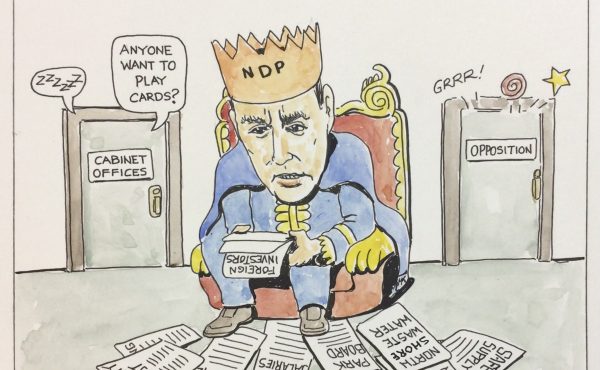
It’s one of those things you come to accept when using cash to take transit in Vancouver. If you only have a toonie or a $5 or $10 bill, you have to find a place where you can buy gum so you can get some change. But there are places where you can hop on a bus and not worry about such things.
It really doesn’t make sense to inconvenience people who pay with cash by making them find their own change. Is there ANY other business that does this? Vending machines give change. Taxis make change. If you buy tickets at SkyTrain stations you get change. So why not on buses?
Two arguments can be made against giving change. The first, which was quite valid until about 20 years ago, was that it was a big inconvenience to bus drivers. First of all, schedules would be hard to keep if they had to count out change at every stop. Drivers would also have to carry large amounts of cash, making them possible robbery targets. And finally, there’s simply the hassle of supplying drivers with all that cash every day. It used to be that the conductor on board would handle fares, something you still see on long distance trains. But when the conductor was done away with due to cost issues, passengers were suddenly confronted with the dreaded words “exact change only”.
In North America and most other places this situation has continued for the past 75 years or so. Isn’t it about time that bus fareboxes made change as well? Well, they do – but you have to go to Japan to find them. If you take public transit anywhere in Japan, you can always use bills, and you can always get change. In the first photo you can see the type of automatic fareboxes that are used by all the Toei buses and trams in Tokyo. On their website they even provide a handy diagram of the machine and how to use it: Farebox diagram
If you have a bus card, which  you can reload like a Starbucks card, you simply insert it into the card slot. If you have coins, you throw them in the top. Bills are inserted on the side. In either case, you get exact change. If you don’t say anything to the driver, he’ll assume a single adult fare, which he selects on the screen, shown in the second photo. It shows an adult fare of 160 yen, and the fare for children of 80 yen. If it gets more complicated, like two adults and one child, he simply chooses those from the screen, and the exact change is given. How easy is that? Why can we not have these machines on buses in Vancouver?
you can reload like a Starbucks card, you simply insert it into the card slot. If you have coins, you throw them in the top. Bills are inserted on the side. In either case, you get exact change. If you don’t say anything to the driver, he’ll assume a single adult fare, which he selects on the screen, shown in the second photo. It shows an adult fare of 160 yen, and the fare for children of 80 yen. If it gets more complicated, like two adults and one child, he simply chooses those from the screen, and the exact change is given. How easy is that? Why can we not have these machines on buses in Vancouver?
Of course, it comes down to argument #2. The cost. Obviously these machines are more expensive than the simple drop boxes that Coast Mountain Bus Company uses. But these electronic boxes have their advantages. The first is that you know exactly how many people are getting on the bus every day, and at which stops. The second is that by making transit easier to use and less frustrating for infrequent passengers, you encourage further use, thereby increasing revenues. And the third advantage is that we’ll stop wearing out our jaws from chewing all that gum.
***
John Calimente is the president of Rail Integrated Developments. He supports great mass transit, cycling, walking, transit integrated developments, and non-automobile urban life. Click here to follow TheTransitFan on Twitter.

